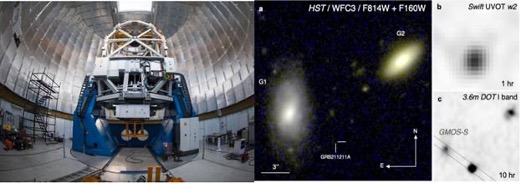Published on: December 9, 2022

Gamma Ray Burst
Gamma Ray Burst

Why in news?
Photometric observations taken with the 3.6 m Devasthal Optical Telescope detects unexpected kilonova emission from ‘a long-duration gamma-ray burst’
Highlights:
- The prompt emission (initial gamma-ray emission) of GRBs are automatically discovered by space-based gamma-ray missions such as NASA’s Fermi Gamma-ray Space Telescope, Neil Gehrels Swift Observatory, and India’s AstroSat.
What is Gamma Ray burst(GRBs)?
- GRBs are powerful astronomical cosmic bursts of high-energy gamma-ray.
- It emits more energy in a few seconds than our Sun will emit in its lifetime
- They has two distinct emission phases:
- The short-lived prompt emission (the initial burst phase that emits gamma-rays)
- Followed by a long-lived multi-wavelength afterglow phase.
- The prompt emission discovered by space-based gamma-ray missions such as NASA’s Fermi Gamma-ray Space Telescope, Neil Gehrels Swift Observatory, and India’s AstroSat.
What is Kilonova emission?
- In recent years, scientists have discovered a special phenomenon called a kilonova of visible and infrared light with short-period GRBs, also known as a potential source of gravitational waves.
- It has been hypnotized that the heat produced by the radioactive decay of heavier elements may emit kilonova.
- This process also produces heavier elements, such as gold and platinum.
- Observing kilonovas at near-infrared wavelengths is technically challenging, and only a few telescopes on earth, can detect
-
3.6-meter Devasthal Optical Telescope of the Aryabhatta Research Institute of Observational Sciences (ARIES), can detect kilonova and gravitational wave objects at these wavelengths upto faint limits.

